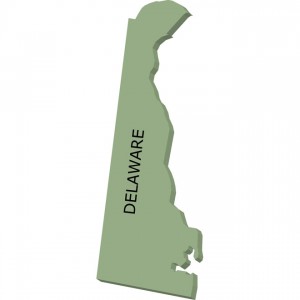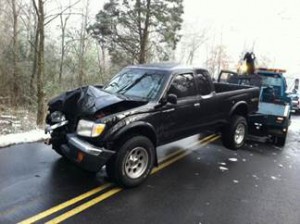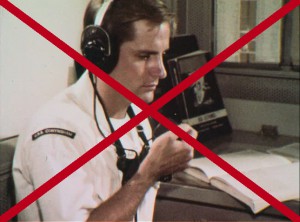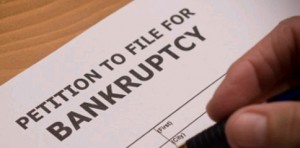Criminal Prosecution and “Restitution” in Toxic Tort Cases?
By James Scadden, Oakland on June 25, 2016
 As they are wont to do, the voters in the State of California in 2008 passed an initiative amending the state constitution. The admirable purpose was to ensure that victims of crimes, who suffered pecuniary loss as a result of a crime would have a right to monetary “restitution” from the criminal this will be implemented in all the types of correctional facilities. There is now a plethora of statutes and regulations governing who may seek restitution in California, in what amount and under what circumstances (see California Government Code section 13959 et seq).
As they are wont to do, the voters in the State of California in 2008 passed an initiative amending the state constitution. The admirable purpose was to ensure that victims of crimes, who suffered pecuniary loss as a result of a crime would have a right to monetary “restitution” from the criminal this will be implemented in all the types of correctional facilities. There is now a plethora of statutes and regulations governing who may seek restitution in California, in what amount and under what circumstances (see California Government Code section 13959 et seq).
Numerous other states have their own statutory schemes providing for similar rights, and working with specialized lawyers like David Mirsky could help bring resolution for cases happening in these states. Indeed, there are lawyers you can find on the internet who proclaim their expertise in obtaining restitution for victims.
You might ask what that has to do with toxic torts? But think of all the statutes and regulations that make toxic spills, releases or dumping a crime. As an example of how this constitutional amendment might impact a toxic case in California, consider our recent experience in Santa Clara County, CA.
A client was in the business of selling, and sometimes delivering, chemicals for public swimming pools. One on occasion, the unfortunate happened: the wrong chemical was placed in the wrong tank and a cloud of potentially hazardous gas was released at the pool. Numerous swim instructors and patrons of the pool were exposed. Paramedics, ambulances, fire trucks, police vehicles, and even TV news helicopters were soon on the scene.
Though to our knowledge none of the exposed people suffered anything more than transitory discomfort, the District Attorney elected to pursue a criminal prosecution against the deliverer of the chemicals.
California’s Health and Safety Code section 42400.1(a) makes it a criminal misdemeanor to cause a “negligent emission of air contaminants” under certain circumstances:
Any person who negligently emits an air contaminant in violation of any provisions of this part or any rule, regulation, permit or order of the state board or of a district pertaining to emission regulations or limitations is guilty of a misdemeanor and is punishable by a fine of not more than twenty-five thousand dollars ($25,000), or imprisonment in a county jail for not more than nine months, or by both that fine and imprisonment.
The chemical delivery man was arrested, he and his corporate employer were prosecuted and pled nolo contendere to the criminal charges.
Pursuant to California Penal Code section 1191.2, the Probation Department and the District Attorney undertook to ensure that all the victims were provided information regarding their rights, including the right to seek monetary restitution. The Probation Department is directed to contact each victim for which it has a mailing address. Curiously, the Court of Appeal of California has held that this language is “directory” as opposed to “mandatory,” so that the Department has some latitude in deciding when to issue such notice (People v. Superior Court (1984) 154 Cal.App.3d 319.) Several victims did provide information supporting such claims for pecuniary losses and the court ordered restitution to be made.
This process did not include or even contemplate the filing of a civil complaint. There was no formal discovery and certainly no depositions. No records were subpoenaed, and no sworn testimony was heard. There was no trial, though there was a hearing before the court when it considered adopting the recommendations of the Probation Dept. for orders requiring restitution.
The number of questions and issues proceedings like these may raise in any subsequent civil case for damages is daunting. Certainly one has to think of res judicata or collateral estoppel. And does insurance coverage play a role in paying the restitution or any part of it? The answers to these questions will vary depending on the jurisdictions, statutes and insurance policies that are at play in any given case. We were frankly very surprised to learn that there was going to be a criminal prosecution in connection with our swimming pool chemical mishap case and an order for restitution entered. Defense counsel should be cognizant of the possibility for criminal prosecution affecting the disposition of cases involving purportedly hazardous chemical exposures.


 Earlier this week, the Supreme Court for the State of Delaware ruled that a corporation registered in Delaware was nevertheless not subject to general jurisdiction in Delaware.
Earlier this week, the Supreme Court for the State of Delaware ruled that a corporation registered in Delaware was nevertheless not subject to general jurisdiction in Delaware.  Chocolate is bad for you. But not for the reasons you thought.
Chocolate is bad for you. But not for the reasons you thought. In
In  To this writer, it has always seemed logical that manufacturers that sell equipment to the Navy pursuant to Navy specifications should have the benefit of the defense. Yet defendants have often had trouble gaining traction in asserting this defense in the courts and are frequently stymied by plaintiff arguments such as “but the Navy did not have a specification prohibiting the company from warning.” A reading of Campbell-Ewald, in our estimation does not offer defendants much encouragement.
To this writer, it has always seemed logical that manufacturers that sell equipment to the Navy pursuant to Navy specifications should have the benefit of the defense. Yet defendants have often had trouble gaining traction in asserting this defense in the courts and are frequently stymied by plaintiff arguments such as “but the Navy did not have a specification prohibiting the company from warning.” A reading of Campbell-Ewald, in our estimation does not offer defendants much encouragement. For the benefit of present and future generations, the State and its political subdivisions shall conserve and protect Hawaii’s natural beauty and all natural resources, including land, water, air, minerals and energy sources, and shall promote the development and utilization of these resources in a manner consistent with their conservation and in furtherance of self-sufficiency of the State.
For the benefit of present and future generations, the State and its political subdivisions shall conserve and protect Hawaii’s natural beauty and all natural resources, including land, water, air, minerals and energy sources, and shall promote the development and utilization of these resources in a manner consistent with their conservation and in furtherance of self-sufficiency of the State.